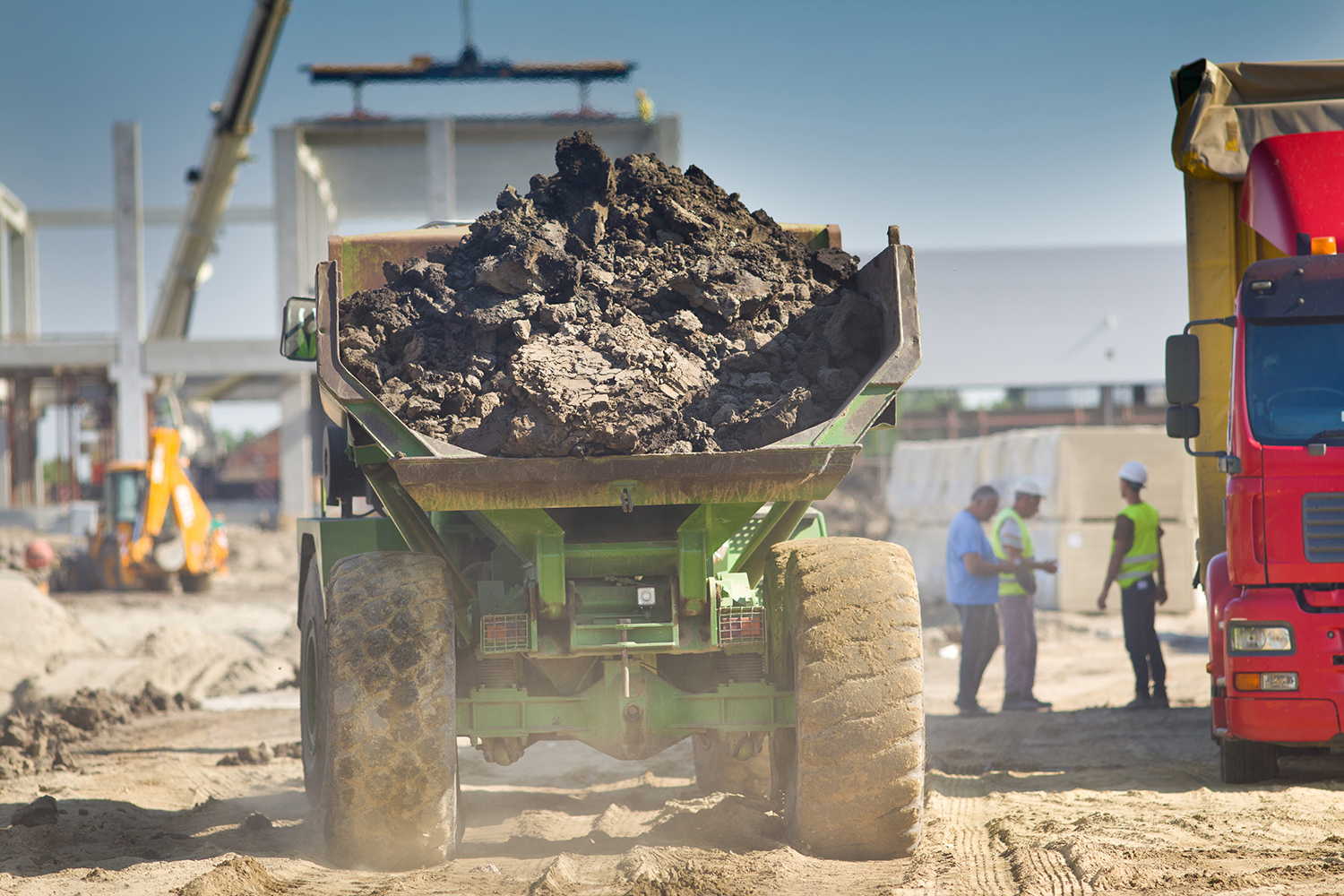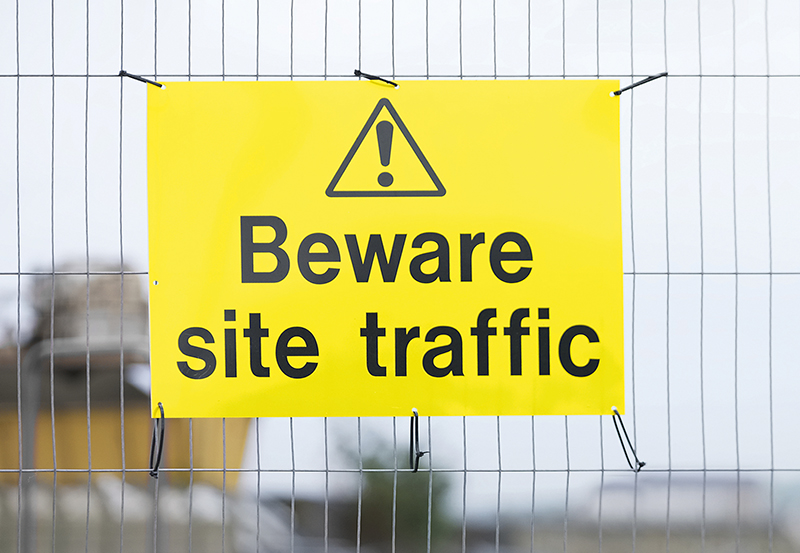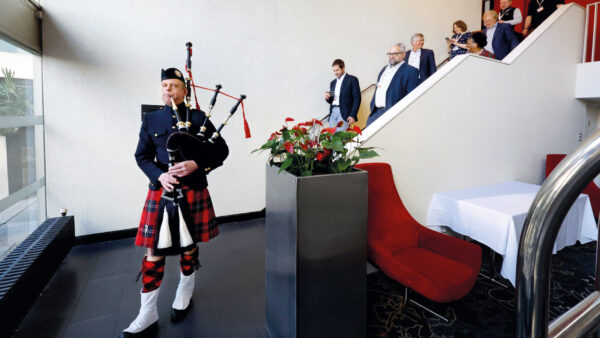
The most obvious risks are usually those that occur frequently – that does not always translate into them being adequately and consistently controlled or mitigated. A case in point is vehicle movement, says Matt Kyle.
Construction sites are busy places with an almost constant movement of vehicles and plant, often in tight spaces with the vision of operators restricted. Those who may come into the path of vehicles are often preoccupied with a different task or taking the most direct route to save time.
It is not surprising, therefore, that the Health and Safety Executive’s (HSE) most recent accident statistics, for 2021/2022 figures released in November 2022, show that 20% of all work-related deaths involve vehicles.
These industry figures consistently show that around seven fatalities occur annually as a result of persons being struck by vehicles and plant on construction sites. Add to that the number of injuries and near misses and it is clear this is a very material risk – and, critically, one that is not being consistently well managed.
Arguably, the measures to control the risk are straightforward, but getting people to keep thinking about risk and embedding safe behaviours is challenging. We all know that we don’t walk behind vehicles, so what training should there be?
Getting it wrong
There has been a number of recent prosecutions for vehicle-related incidents. Food manufacturer Egger (UK) was fined £910,000 after a self-employed lorry driver was killed making a routine delivery of recycled wood. The HSE found the company had failed to conduct sufficient risk assessments for workplace transport, stating: “This resulted in a failure to identify that pedestrians, including delivery drivers, were at risk of being struck by moving vehicles in the yard, despite the high level of vehicle movements and previous near misses.”
Civil engineering firm BAM Nuttall was fined £700,000 following an incident in which an employee who was repairing equipment was run over by a dumper truck and fatally injured. The HSE inspector commented: “This death could easily have been prevented if his employer had acted to identify and manage the risks involved and to put a safe system of work in place.” Another significant fine of £866,650 was levied at Moy Park, a food processor, following serious injuries caused to an employee struck by a reversing forklift.
These are busy workplaces where vehicles may operate in tight spaces with limited visibility of pedestrians. On many construction sites the risk may be even greater, given the amount of activity and changing layouts. In each case the main failing was a lack of any proper assessment of the risk, meaning there was no system of keeping pedestrians and vehicles apart.
There was no plan even before getting on to training safe behaviours.
Planning for vehicle and pedestrian movement
Applying a hierarchy of measures, the start point should be how the risk can be eliminated or at least greatly reduced by the way the site operates and vehicles and pedestrians interact.

What does the law say?
As well as general duties under the Health and Safety at Work Etc Act 1974 there are specific obligations governing the organisation of traffic routes in the Workplace (Health, Safety and Welfare) Regulations 1992. Regulation 17 requires the following:
Every workplace must be safe for the people and vehicles using it.
Workplace traffic routes must be suitable for the people and vehicles using them. This would include ensuring that routes are far enough away
from doors or gates that pedestrians use, or from pedestrian routes that lead on to them, so the safety of pedestrians is not threatened.
Measures should be taken to ensure that there is sufficient separation between vehicles and pedestrians.
All traffic routes are suitably indicated where necessary.
In addition, Regulations 27 and 28 of Construction (Design and Management) Regulations 2015 require the management of safe traffic and pedestrian routes throughout the construction phase and client handover period. Therefore, aside from managing the risk, those with responsibility for construction sites are exposed to criminal liability: there is the legislation in the HSE’s armoury to make enforcement quite straightforward.
Pedestrian and vehicle separation should be part of the design and organisation of the site. Main considerations include thinking about where vehicles will need access, where the heavy use areas are (the primary routes for delivery or access to main work areas) and whether these can be made vehicle only.
Planning should include how the traffic flows, maximising use of one-way routes, having designated parking areas, clear signing and the enforcement of speed restrictions. Work on site should be planned to minimise vehicle movements – particularly reversing – and to avoid unnecessary deliveries and the double handling of materials on site.
The location of loading and storage areas needs to be carefully considered. Where there is little onsite storage space, offsite storage areas may be required for temporary materials. Loading and storage areas should be located away from main pedestrian routes and should have one-way systems and safe exit points, as well as sufficient room for vehicle movements. Pedestrian routes should be defined, with dedicated walkways and clear and marked crosswalks. Efficient intersections are fundamental to controlling risk.
In some circumstances it may not be reasonably practicable to achieve physical segregation between pedestrians and vehicles – for example, during infrequent, short-duration, low-risk unloading operations. In such cases signallers and safe systems of work should be used to control vehicle and pedestrian movements. To ensure this happens, there needs to be some planning and oversight of vehicle movement. Too frequently, decision-making is left only to the vehicle operator, who might be keen just to get the job done quickly.
Driver aids
Driver assistance aids are a secondary layer of safety measures. These have improved and become more cost-effective in recent years. It is difficult to argue that they are not a reasonably practicable step. Measures such as additional mirrors, camera reversing aids and warnings are all helpful.
However, these rely heavily on the operator using them effectively and being aware of others around them. For example, a reversing alarm may not be heard; it should never be the primary control.
Training and entrenching behaviours
Communication is essential. Drivers and pedestrians entering the site
need to be informed of the risks and rules regarding routes.
Drivers may visit the site only once, so someone needs to be responsible for managing their activities.
If the routes are well marked and everyone knows the plan, it might be argued there is no need for any further action – people know the risks and there are obvious easy-to-use control measures. However, behaviours can slip, the use of a site may change, areas become blocked and alternatives determined at short notice.
The role of all, but managers in particular, in developing the right culture is essential. The messaging around keeping safe from vehicles has to be continually reinforced so that following the systems in place becomes as natural as wearing a hard hat. Toolbox talks, signs and positive reinforcement of site rules are essential. Those failing to follow the safe routes should be called out – this includes those coming on to sites just to deliver. There has to be some accountability.
Easy to manage?
There will always be pinch points as a site evolves, and those who don’t quite follow the rules, but this is an everyday risk with which everyone is familiar. Reviewing how the risk can be managed through good planning, backed by clear communication, is fundamental. It is a risk that we all know, but one of which all need to be made continually aware, to avoid harm to employees or visitors and a potentially costly prosecution.
Matt Kyle is an associate director in the health and safety team at Osborne Clarke.












